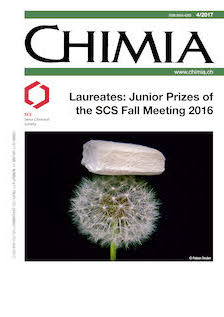Progress in the Optimization of 4(1H)-Quinolone Derivatives as Antimalarials Targeting the Erythrocytic, the Exoerythrocytic and the Transmitting Stages of the Malaria Parasite
DOI:
https://doi.org/10.2533/chimia.2017.213Keywords:
Antimalarials, 4(1h)-quinolone, Structure–activity relationship (sar), Structure–property relationshipAbstract
Malaria is one of the leading infectious diseases occurring mainly in tropical and subtropical areas. Although available antimalarial tools have reduced the number of fatalities, there is still an urgent need for the development of new and more efficacious treatments to cure and eradicate malaria especially due to emerging resistance to all antimalarial drugs. Research was initiated to revisit antimalarial compounds which were deemed unsuitable as a result of poor understanding of physicochemical properties and the optimization thereof. The 4(1H)-quinolones are a class of compounds with demonstrated activity against malaria parasites. Recent optimization of the long-known core led to two highly promising compounds, i.e. P4Q-391 and ELQ-300, with great selective activity against all stages of the parasite's life cycle and good physicochemical properties. In this paper, we discuss the key steps on the way to these compounds, which fuel hope to find a suitable treatment for the prevention, cure and eradication of malaria.Downloads
Published
2017-04-26
Issue
Section
Scientific Articles
License
Copyright (c) 2017 Swiss Chemical Society

This work is licensed under a Creative Commons Attribution-NonCommercial 4.0 International License.
How to Cite
[1]
Chimia 2017, 71, 213, DOI: 10.2533/chimia.2017.213.







